When I picked my son up from school yesterday, another parent who currently has no credit cards asked me for advice on making a trip to Disney World more affordable by possibly delving into our world of credit card rewards. Her question seemed simple at first, but as I considered the facets, I found it an interesting thought exercise to consider where a credit card newbie should start assuming that this person has no prior knowledge of credit card rewards and airline and hotel loyalty programs but rather just wants to reduce the cost of an otherwise expensive vacation. It’s going to be the Question of the Week on this week’s podcast (publishing later today!), but I’m interested in reader input in how I thought this one through.

The question: How can I get into credit card rewards to reduce the cost of a trip to Disney World?

I was picking up my son from school yesterday got approximately this question from another parent who I’ll call Melissa (I’m paraphrasing):
I’m interested in taking a trip to Disney World in a few years. I don’t have any credit cards at all. I’m very frugal and never thought I needed a credit card because I have enough in my checking account to cover my needs / emergency costs. However, I wondered if maybe I’m wrong about not having any credit cards and I should be getting something back for my spend. Do you have any suggestions?
I’m sure that many long-time readers have some immediate thoughts. I did, too. Those who play the points and miles game know that Disney is tough to do on points, but we also know that there are plenty of cash back welcome bonuses or ways to use flexible points for flights and hotels or other general savings tricks to make this happen.
But as I started to consider this from a few angles, I realized that it was a puzzle that was slightly more challenging than I’d initially imagined. Consider a few things:
- Melissa has no credit cards (perhaps hasn’t ever had any, I’m not sure) and hadn’t even considered opening one before this. On the one hand, that’s great for many reasons — it means that Melissa knows how to live within her means (which is essential since credit card rewards are only useful if you don’t spend more than you can afford to pay off each month) and it means that she probably has a lot of options open to her assuming that she doesn’t have many / any blemishes on her credit reports (though it also means that her credit file is thin, which might make some banks tougher than others). However, in her position, I would assume that Melissa is probably willing to open one or two new credit cards, but a complex strategy that involves five or six credit cards is probably out for now.
- She spends most of her money on groceries and gas. Groceries are probably mostly purchased at the local grocery store.
- Melissa does have a business. She’s a farmer. I don’t know how big her family’s farm is, but in my area most farms are smaller family farms (as compared to the giant corporate farming in some areas).
- She has a family of six. I mention this because it presents challenge on the redemption side since, for example, finding six airline award seats on flights to and from Orlando might be tough and the cost of a hotel is likely high since they may need two rooms (or a condo-style option).
- Disney is expensive and not very rewards-friendly. Whereas there are a lot of ways to use rewards programs to pay next to nothing out of pocket for flights and nice hotels in many places, Disney is a tougher egg to crack. There aren’t many ways to save much on Disney park tickets, nor is there a great option for using points to stay on-property at Disney World (as compared to the outsized value you can get with rewards for most other destinations around the world). For this reason, I think that earning cash (and cash-like points) is king for a Disney trip (feel free to convince me otherwise in the comments!).
- She likely has no prior knowledge of credit card rewards programs or airline or hotel loyalty programs based on our initial conversation (I’m making the assumption that since she has no credit cards and doesn’t currently travel very much that most of this stuff would be totally new to her). This means that any strategy has to be simple to both learn and use.
To that last point, let me be clear: I firmly believe that Melissa (and anyone else with an interest) can learn the ins and outs of our game with some time and effort. But as a beginner, it can be easy to get overwhelmed with the complexities that points and miles blogs present in terms of learning how to move points from Credit Card X to foreign airline Y to book a seat on domestic airline Z when you’ve never even had a frequent flyer account with domestic airline Z no less made a partner award booking. When someone first starts in this hobby, I think simplicity is key. In my opinion, Melissa should start with rewards that are both easy to earn and easy to use.
That made me think twice about my recommendations.
Many of us would recommend Chase cards first, but I don’t think that’s the answer here
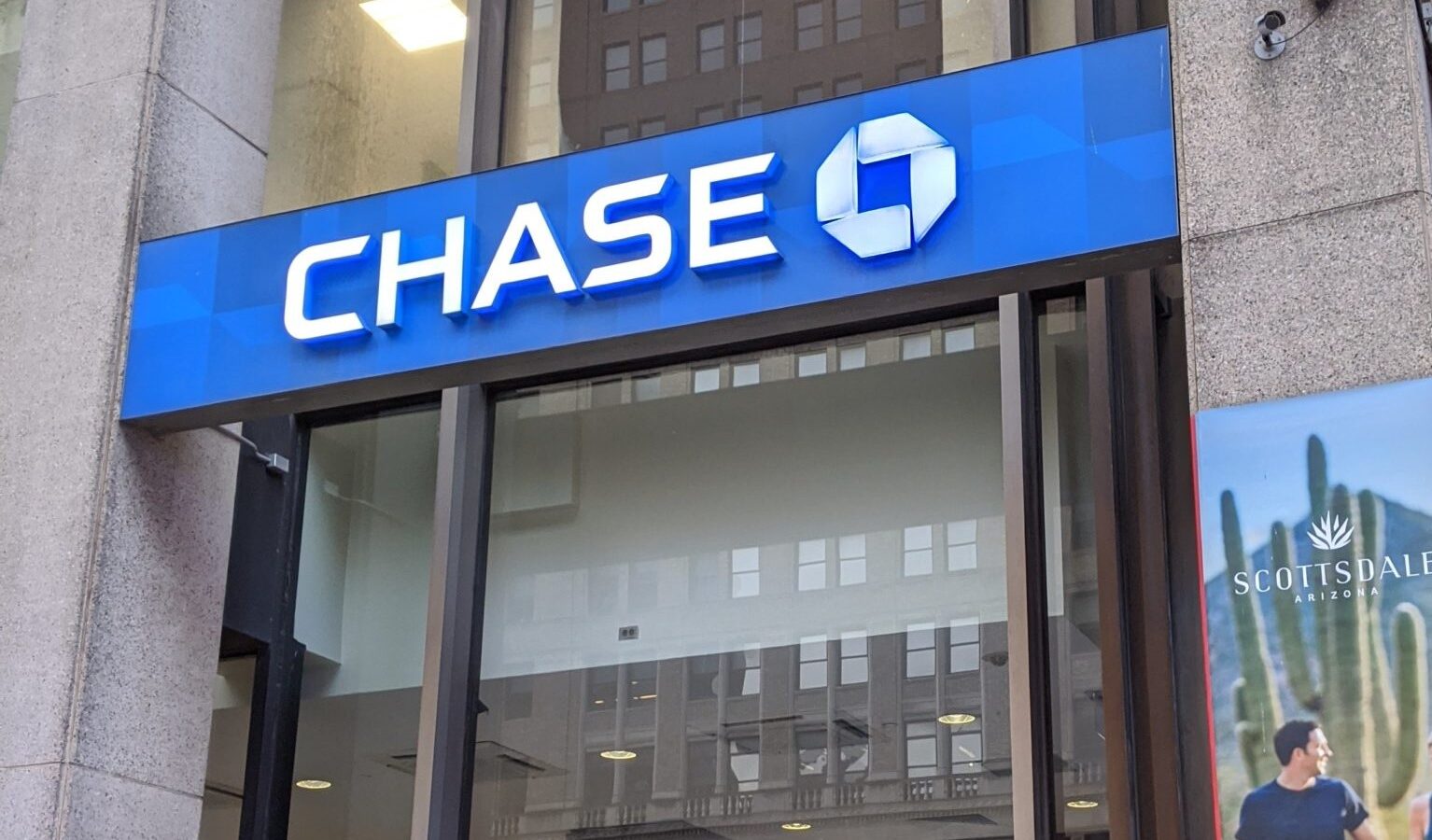
My first thoughts went to Chase products because of the fact that Chase has its 5/24 rule — if you’ve opened 5 or more credit cards in the past 24 months, Chase typically will not approve you for a new card.
The existence of that rule has led to the popular advice to start with Chase credit cards since it can be easy to get swept up in opening new cards and then find yourself locked out of Chase cards. In Melissa’s case, I assume that to be a relatively low risk since I think it is unlikely that she’ll quickly go from zero cards to 5 in 24 months, but those of us who have accelerated well beyond that often look in the rear view mirror and think about what we wish we’d known at the beginning.
Furthermore, redeeming Chase points to decent value is easy. If Melissa earned Chase points, she could easily use them to book travel through Chase Travel℠ and get good value out of her points.
However, as I started offering a strategy that included a Chase Freedom Unlimited and Chase Sapphire Preferred card, I stopped myself as I realized that it just didn’t make sense for Melissa’s situation (in fact, that’s what led me to tell her I’d get back to her and to eventually go home and start writing this post). Chase has a lot of strengths in its transfer partners and ease of points redemption through its travel portal (Chase Travel), but Chase is very weak when it comes to grocery and gas since their core cards offer no extra points in those categories. I realized that while many of us take the advice to start with Chase products as though it is the only way, it just didn’t make sense here.
Citi Premier for 3x gas and grocery?
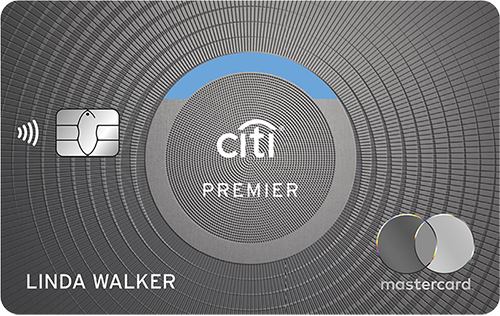
My next thought was the Citi Premier card. Unlike my Chase strategy above, the Premier offers 3 points per dollar on grocery, gas, dining, hotel, and air travel . The bonuses on grocery and gas are a perfect fit since they represent a great return on the two categories where she spends most.
Furthermore, the Premier card currently comes with a decent intro bonus. More card info can be found by clicking the card name below to go to our dedicated card page, but here’s a summary:
| Card Offer and Details |
|---|
 ⓘ $741 1st Yr Value EstimateClick to learn about first year value estimates 60K Points Non-AffiliateThis is NOT an affiliate offer. 60,000 points after $4,000 spend in 3 months$95 Annual Fee Information about this card has been collected independently by Frequent Miler. The issuer did not provide the details, nor is it responsible for their accuracy. Recent better offer: 75k after $6 spend in 3 months (ended 4/8/25) FM Mini Review: Very strong earnings for spend. Excellent bonus categories. Points transferable to select airlines. Recommend pairing this card with Citi Double Cash Click here for our complete card review Earning rate: 3X grocery ✦ 3X dining ✦ 3X gas stations & EV charging ✦ 3X flights, hotels, travel agencies ✦ 10X hotels, car rentals, and attractions booked through Citi Travel℠ Card Info: Mastercard World Elite issued by Citi. This card has no foreign currency conversion fees. Noteworthy perks: Transfer points to airline partners ✦ $100 Annual Hotel Savings Benefit ($100 off a $500+ hotel stay, excluding taxes and fees, when booked through Citi Travel) ✦ Travel protections See also: Citi ThankYou Rewards Complete Guide |
The Premier card does have a $95 annual fee, but with this one card she would earn above-average return on her main two spending categories.
Of course, outside of the 3x categories (grocery, gas, dining, hotels, and airlines), the Premier card offers just 1 point per dollar spent, and that’s not a good return on spend. If she wanted a nice complement to the Premier that would ensure that she earns a good base level earning on purchases outside of those categories, the best fit for her would probably be the Citi Double Cash because that card effectively earns 2 points per dollar spent (advertised as 1 point per dollar spent when you make a purchase + 1 point per dollar spent when you pay for that purchase).
| Card Offer and Details |
|---|
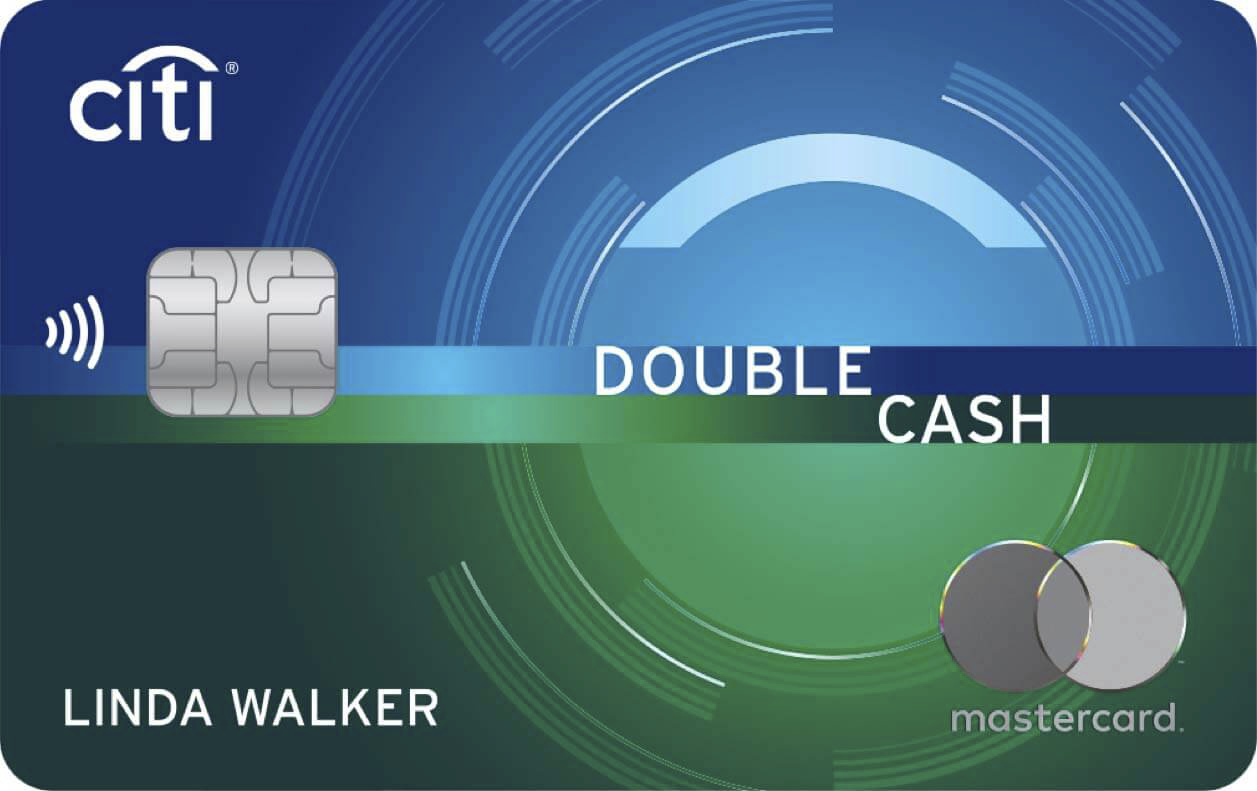 ⓘ $299 1st Yr Value EstimateClick to learn about first year value estimates 20K points Non-AffiliateThis is NOT an affiliate offer. $200 cash back after spending $1.5K in first six months. Note: $200 is awarded as 20,000 ThankYou® Points.No Annual Fee Information about this card has been collected independently by Frequent Miler. The issuer did not provide the details, nor is it responsible for their accuracy. FM Mini Review: 2X rewards for all spend with no annual fee makes this card a winner. Earn 2X everywhere and redeem for the equivalent of 2% cash back or 2X ThankYou points. Pair with the Premier or Prestige card to make points transferrable to airlines. Click here for our complete card review Earning rate: 2% cash back everywhere (1% cash back for each purchase + 1% when paying your credit card bill for that purchase). ✦ Earn 5% total cash back on hotel, car rentals, and attractions booked on Citi TravelSM Portal through 12/31/25. Base: 2X (3%) Card Info: Mastercard World Elite issued by Citi. This card imposes foreign transaction fees. Noteworthy perks: 1X when you make a purchase + 1X when you pay for those purchases ✦ 24 month extended warranty See also: Citi ThankYou Rewards Complete Guide |
The downside with this strategy is that the redemption options are somewhat limited. Citi ThankYou points can be transferred to some interesting airline and hotel programs, but most of them are unlikely to be terribly useful for a trip to Disney World. That’s because Citi’s only major US airline program is JetBlue TrueBlue. JetBlue actually has a nonstop from our local airport to Orlando, so that could end up being a valuable option, though transferring to a partner does involve some learning curve in terms of figuring out how to search for award seats and set up and connect the frequent flyer program and transfer to it. I obviously think that all of that stuff is well worth learning about, but it adds some barriers to a first redemption.
While Citi has some great foreign airline transfer partners that could be valuable for domestic flights, the US airlines are releasing fewer and fewer seats to their foreign airline partners. With a family of six flying out of a small airport, I think Citi’s airline programs are unlikely to be terribly helpful for her.
On the hotel side, Citi could be more helpful if Melissa is open to staying at a hotel off-property that’s near Disney. Citi points transfer 1:2 to Choice Privileges and there are numerous Choice properties in the Orlando area. There’s also a Bluegreen Vacations timeshare property that can sometimes be booked for 30,000 Choice points per night (which is just 15,000 points per night transferred from Citi). That would give Melissa and her family an entire condo-style accommodation (I believe you can sometimes even snag a two-bedroom unit for that price). I attended a timeshare presentation there a couple of years ago to earn Choice points and a gift card (though I’m hesitant to send Melissa for an offer like that since I wouldn’t want her to get wrapped up in a timeshare).
I think her core option for redeeming Citi ThanYou points would be taking a statement credit at a value of $0.01 per point. With the Premier card, she could easily enough redeem her points for a statement credit at that value (although, oddly, Citi requires logging in to a different site, thankyou.com, and navigating around there to redeem points for a statement credit). Overall, redeeming points for $0.01 here is not bad since it means that her grocery and gas purchases will effectively be earning her 3% back. Further, the 60,000-point welcome bonus on the Premier card could be cashed out for $600 and the Double Cash bonus is $200. To be clear, redeeming points for $0.01 per point is well below our Reasonable Redemption Value for Citi points when using their transfer partners, but for this trip it seems like a reasonable enough option.
If I assume that her family of six spends about $150 a week on groceries (which is a lowball estimate for a family of six, but since they farm, I’m guessing that they spend less on some types of groceries than I do) and $50 per week on gas (which I’m also guessing may be a very low estimate considering that they probably need to spend money on gas for farm equipment), that’s over $10,000 per year spent on those two categories. Getting 3% back on gas and grocery would mean that Melissa would earn $300 per year with just the Premier card in just those two categories.
If I further assume that they spend another $5,000 per year on all other expenses that can be put on a credit card and they put those expenses on a Citi Double Cash card for 2% back, that’s another $100 back per year. On top of the $600 welcome bonus for the Premier and the $200 bonus for the Citi Double Cash and the $300 back on gas and grocery estimated above, she’d easily have an extra $1200 at the end of the first year with this two-card strategy, minus the $95 annual fee for the Premier card. That feels like a low estimate given than I’m using very conservative grocery, gas, and everywhere else spending estimates, so in reality it might be hundreds more.
That’s not going to completely cover a trip to Disney, but it’s certainly an option.
Greg and I honed in on Capital One

After briefly considering the Premier card strategy above, on this week’s Frequent Miler on the Air podcast, Greg and I decided that a similar but perhaps better strategy might come from starting with Capital One cards.
First of all, Capital One tends to be easier on approvals for people who don’t have many (or any) credit cards. Ironically, Capital One is a tougher approval for those of us who have a lot of cards, but I’d bet that Melissa has a decent shot at Capital One cards. By comparison, Citi can be tough on approvals for the Premier card.
Second, I think that Capital One serves as an easy introduction to credit card rewards. Capital One makes it both easy to earn and easy to use rewards — and I think Melissa could start with a no-annual-fee card where she’d see an immediate impact.
I think Melissa should start by getting the Capital One SavorOne credit card. This isn’t the flashiest card on the market, but I think it fits the situation.
First up, there’s no annual fee, which makes it a good starter card. Long-term, one of the key components of a good credit score is average age of account. It helps to have a couple of no-annual-fee credit cards that you can keep open forever so they keep your average age of account high even when you open a new card, so having a no-annual-fee keeper-card is a good thing.
The current intro bonus for this card is $200 after you spend $500 in the first 3 months. More detail can be found by clicking the card name below:
| Card Offer and Details |
|---|
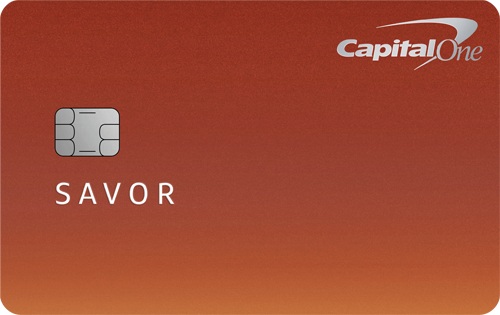 ⓘ $0 1st Yr Value EstimateClick to learn about first year value estimates None This card is currently unavailable for new applicationsNo Annual Fee Information about this card has been collected independently by Frequent Miler. The issuer did not provide the details, nor is it responsible for their accuracy. Earning rate: 3% on dining, entertainment, select streaming services, and purchases at grocery stores (excluding superstores like Walmart® and Target®) ✦ 8% cash back on Capital One Entertainment purchases ✦ 5% on hotels and rental cars booked via Capital One Travel (terms apply) ✦ 1% everywhere else Base: 1% Dine: 3% Grocery: 3% Other: 3% Card Info: Mastercard issued by CapOne. This card has no foreign currency conversion fees. Noteworthy perks: No foreign transaction fees |
That’s a pretty easy target to hit with a couple of trips to the grocery store, so Melissa should see that $200 hit pretty quickly (maybe even in her first month). Speaking of the grocery store, the SavorOne earns 3% back at grocery stores (and also on dining, entertainment, and streaming services). That’s a good return on spend in those categories. Given my spending estimate above of $150 per week on groceries, she’d have $234 cash back from that spend + $200 from the welcome bonus = $434 at the end of the first year from this card.
However, the SavorOne isn’t a great option for spend on most other purchases, so once she’s earned the $200 bonus, she’ll probably also want to get a Capital One Venture Rewards credit card.
| Card Offer and Details |
|---|
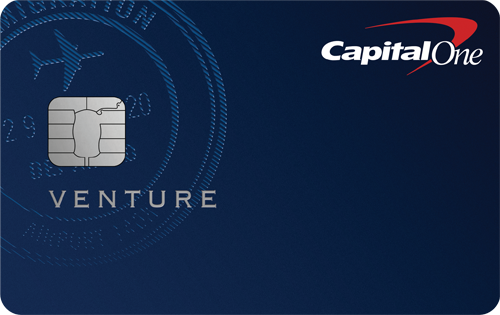 ⓘ $985 1st Yr Value EstimateClick to learn about first year value estimates 75K Miles ⓘFriend-ReferralThis is a friend-referral offer. A member of the Frequent Miler community may earn a referral bonus if you are approved for this offer 75k miles after $4k spend within first 3 months$95 Annual Fee Information about this card has been collected independently by Frequent Miler. The issuer did not provide the details, nor is it responsible for their accuracy. Recent better offer: 75k miles after $4k spend within first 3 months + a one-time $250 Capital One Travel credit to use in your first cardholder year FM Mini Review: This card earns 2 "miles" per dollar, which are worth exactly 1 cent each toward travel. This makes the return on spend similar to a 2% cash back card (though in this case you must redeem your miles to offset travel in order to get 1 cent per mile). One big advantage over cash back: Capital One allows transfering their "miles" to airline miles & hotel points. Click here for our complete card review Earning rate: 2X miles everywhere ✦ 5X miles on hotels, vacations rentals and rental cars booked via Capital One Travel Card Info: Mastercard issued by CapOne. This card has no foreign currency conversion fees. Noteworthy perks: Receive up to $120 application fee credit for Global Entry or TSA PreCheck® ✦ Redeem miles for travel at value of 1 cent per mile ✦ Convert "miles" to airline miles & hotel points ✦ No foreign transaction fees |
This card has a $95 annual fee, but the new cardmember bonus offer is currently 75,000 Capital One Miles after spending $4,000 in the first 3 months. What I like about Capital One Miles is that they are easy to understand and use. While it is possible to get more value with Capital One’s transfer partners, at a base level Capital One miles can be used at a value of $0.01 per mile to erase travel purchases. In other words, the 75,000 points she would earn from the welcome bonus is worth $750 if used to erase travel purchases — so, for example, Melissa could book a hotel at Disney World that costs $500 and use 50,000 points to cover that and still have 25,000 points / $250 left over. She could buy Disney World park tickets from Undercover Tourist and I believe that purchase would also code as travel and allow for her to redeem Venture miles for Disney tickets. Capital One makes it pretty easy / intuitive to redeem miles against travel purchases.
Importantly, the Venture card earns 2 Capital One miles per dollar everywhere, which makes it decent for spending everywhere other than grocery and dining (where Melissa should use her SavorOne card for in order to earn 3% back).
A potential downside here is that Capital One doesn’t offer a good return on gas station spend. Still, Melissa could do pretty well just using the Venture card everywhere other than grocery / dining / streaming.
Assuming my same lowball spending estimates from above and that Melissa puts her $7,800 in grocery spend on the SavorOne and the other $7,200 per year spent on her Venture card, she’d have $434 in cash back on her SavorOne card at the end of the first year and 89,400 miles on her Venture card (75,000 from the welcome bonus + 14,400 from spending $7,200 on the Venture card). That’s worth $894 toward travel. Assuming she puts all of those rewards toward her Disney trip, she’d have $1,328 at the end of the first year.
To be clear, my spending estimates here in fact too low. She would need to be able to spend $4,000 in 3 months with her Venture card in order to earn the welcome bonus. With some techniques for time-shifting spend (by perhaps pre-paying utilities or buying a gift card for her favorite gas station), it shouldn’t be too hard to meet that bar, but it’s worth noting that this card combination would probably work best of Melissa really spends a bit more than my estimates (though that means she’ll also end up with more than $1,328 in rewards at the end of the first year).
I do like Capital One’s transfer partners a bit more than Citi’s, though I remain unconvinced that transfer partners will be a big consideration for Melissa’s first redemption. If she decides to learn how to leverage airline miles and hotel partners, one could make an argument for Citi perhaps being a better starting point than Capital One because of its favorable transfer ratio to Choice Hotels or you might make the argument that transferring to Wyndham could make sense for this trip (which partners with both Capital One and Citi). Personally, I think the prospect of using Capital One Miles to either erase the cost of an on-property hotel at Disney World or the cost of a more reasonably-priced hotel or Airbnb off-property seems simple.
You could make the argument that redeeming Citi points for a statement credit is the same sort of idea, but on the other hand redeeming Capital One miles against the purchase feels a little bit more like an award redemption — and getting the Joy of Free from that first travel redemption (with a Venture card!) was what first sent me down the rabbit hole that led to me blogging here at Frequent Miler.
For readers who will question it, I should further note that I agree with those of you who will say that the Capital One Venture X Rewards card is a better deal than the Venture card — but it’s not the right tool for the job here. That’s because the Venture X card’s high $395 annual fee is likely to be an immediate turn-off. Furthermore, making that card a better deal than the Venture card requires using its annual $300 travel discount offered on travel booked via Capital One. Melissa’s trip to Disney World isn’t going to be for a couple of years and I’m not sure that she ordinarily books $300 worth of travel each year as things stand, so that card didn’t seem like a logical starting point.
For similar reasons, I didn’t think that the U.S. Bank Altitude Reserve made sense. As much as I love my Altitude Reserve, the high annual fee makes it a tougher starting point for a beginner. Furthermore, I have no idea whether Melissa is in the habit of using Apple Pay or Google Pay — and if she isn’t, this card would require more adjustment to her habits.
What about business credit cards?
I mentioned that Melissa has a business: a family farm. Moving forward, I absolutely think that Melissa should be considering business credit cards as the welcome bonuses on those cards can be even more valuable. In my household, earlier this week, we opened a U.S. Bank Business Leverage card for its newly-increased $900 welcome bonus, and that’s not at the top of the best business card offers list on our Best Offers page.
It is possible that Melissa has far more spend than I’m using for guesstimates given whatever business expenses she incurs and that might make it easy for her to meet spending requirements for even larger business credit card offers.
All that said, I see business credit cards as a Level 2 or Level 3 step for Melissa. Business credit cards often require having some personal credit history and are perhaps less likely for easy instant approval for a beginner in this realm. Building a little history with consumer cards should help make the transition to business cards easier in the future.
Bonus tip: bank account bonuses

Since I claimed above that “cash is king” for a trip to Disney World, I think it’s worth a mention that there are numerous other ways to stumble across easy cash in the games we play.
One of my favorite tools for this is bank bonuses. Many banks offer easy bonuses for setting up a new checking account and receiving a couple of deposits.
I’ve written about my experiences with bank bonuses many times before. While many new checking account bonuses “require” that you receive a certain amount of money in direct deposits, in many cases you don’t need an actual direct deposit (despite terms that suggest you do). In many cases, sending an ACH transfer from one of your other checking accounts will trigger the direct deposit requirement for a new checking account bonus.
My wife and I often pursue checking account bonuses in two-player mode. For instance, this is an easy one where we could each pick up an easy $250 by sending an ACH transfer of $500 each a couple of times from an external account if we were eligible (we already have this particular checking account though).
Doctor of Credit is the ultimate authority on checking account bonuses. Their resources found here are the best in the business for bank bonuses. We also cover many of the best bank bonuses here.
Even with just one or two checking account bonuses — particularly if both Melissa and her husband participate — Melissa could probably nearly double the rewards earned from her credit cards (or possibly earn even more).
Bottom line
There are a lot of more complex ways to “Do Disney” using points and miles. Not mentioned here at all is the ability to use Bilt Rewards points at a value of 1.25c per point toward Disney and a three or four-credit card combination could yield even more coverage of bonus categories and/or far more intro bonus money. But I thought that it made sense to keep a strategy for Melissa pretty simple since this will be her first-ever foray into credit card rewards. In my opinion, Capital One offers the best of both worlds in terms of simplicity: easy-to-understand earning and easy redeeming for travel. And if Melissa branches out to learn more about airline and hotel transfer programs, having access to Capital One’s partners can eventually prove to be even more valuable. I think a decent argument could also be made for the Citi Premier and Double Cash combination, particularly if she spends far more on gas. Either way, in just one year, I think Melissa could have a nice chunk of the cost of her Disney trip locked up and be well-positioned to earn enough to cover that trip a few years from now.





If she really wants to stay on-property and doesn’t want to stay at the Swan or Dolphin, she might consider booking through Costco Travel. It codes as travel from what I understand, and the cost savings that comes from booking through Costco would make the Capital One miles redemptions stretch further. If she’s okay with the Swan or Dolphin, other users suggestions would work well.
Interesting reads…. my outside the box thoughts – farmers are hard workers and it is often difficult for the them to leave their property, and many hidden costs to do so unless friends and family cover. What other vacations have they taken, how’d they pay and how did it go? (I have relatives that farm in KS, they haven’t vacationed in years, although they dream.) Ask her how much she thinks it would cost? What has she done to start the ball rolling? (assess the likehood/depth of her dream) Are the children old enough to make it a “family project” – so small sacrifices (cut out some extra expense but have a “star chart” where they get to add stars (or real dollars in a jar) for a unneccesary thing they don’t buy. Farmers generally have a fair amount of cash spend on farm products (seed, animal food, fencing, etc). 1) super simple start is to use airline portals to start getting points for purchases. Totally free. 2.) Buy SW gift card at costco when they go on sale for $429 for $500 card. You mentioned she had a “checking acct”. My guess is she is earning zero percent interest. Show her how to find high interest savings online. Sounds like a book on simple financial planning might be indicated. Tell friends and family they are saving for a Disney trip and any Christmas or Birthday gifts toward that would be great. Maybe they know someone with lot’s of hotel points that would pass them over to her. Could she barter some farm products, (eggs, etc) for them? Most important she should read your web site start to finish. After all that I’d dive into credit cards and this is why I say this. Sometimes people make these passing in the hallway comments, and because we know this world and our lifestyles circle around it… we get excited to help. I suspect there are many reasons she has no credit cards – and if she has no credit cards how does she even buy things online? Debit card? Maybe she doesn’t spend much time online – most of our suggestions introduce her family to a new world. Innocent questions sometimes lead to more than what she had in mind. Start with things she can do easy, cost no money and require little change – if that works, go from there.
You’ve certainly covered a ton of points options, etc, and pointed out that Disney is generally un-points friendly. (Full disclosure: I write about various discounts and tactics for the theme park site Touring Plans.)
But as someone who loves Disney, I think any plan for trying to save money there is going to have to be a hybrid of points, certificates, and general discount tactics – and it still won’t be a “cheap” trip, for sure.
My play in general these days is staying at the Swan/Dolphin resorts with a combo of free night certificates and points if needed. If the Marriott Boundless offer is the elevated five 50K certs we’ve see a few times now, that can go a long way to savings at a really good location – AS LONG AS they can go when the points price is in the right range. (Swolphin points are so variable lately and definitely edging up over the 65K max on those certs much more than they used to.)
As long as one is OK with not the best points redemption, any points card that erases travel spend can be used to buy park tickets at Undercover Tourist, which codes as travel.
For general spend savings, I’m always watching for cash back offers on cards at locations that sell gift cards, plus in general buying Visa/MC gift cards at Staples with an Ink Cash for the 5x, then using those to buy the 3-4% discounted Disney gift cards at Sam’s Club. (For an easier version of that, just buy Disney GCs at Target with a Red card for 5% off.) That really adds up over time.
Also, even with a family of 6, definitely worth looking into the Southwest companion pass game in 2-player mode with referrals. Could get close to covering most of their airfare if they are near an airport that works for SW. Has really worked well for us (only 4 in my family.)
Finally, outside of points and certs – just need to try to catch good enough discounts that cash doesn’t hurt as much. With 6 people they are likely going to need a larger room or maybe 2 rooms at some locations.
If they are OK with off-site, the Grand Cypress can be a great value for transferring Chase UR over, we stayed in the VIP suite last year, was ginormous and had 2 bathrooms. You do sacrifice the convenience of being in the Disney bubble. It’s not that far away, but does add time and access issues. As you know, pool and grounds there are awesome, and if hanging at the resort at night can catch a long-range fireworks view of both the Magic Kingdom and EPCOT from some rooms or in one of the all-glass hallways.
Other alternatives include watching Priceline for hidden deals – Disney resorts just returned to Express Deals after being MIA for a couple of years. The current batch of deals through June include All-Star Sports resort – they would need 2 rooms there, but prices are as low as $78/night, so pretty sweet. Speaking of suites (pun intended) Art of Animation resort suites show up in hidden deals on some nights in the high $200s, while the cash rate is up nearing $500.
Last room option is to to to rent DVC rooms, which can get you a deluxe resort for moderate resort price, or sometimes much better than that if you watch dedicated listing on the various sites. Again, there’s no real points play there, but might be the best option when you need a larger room. (Old Key West as the oldest DVC resort has the largest footprint rooms, BTW.)
If u book a Disney hotel and buy your park tickets through the hotel/while making your reservation, the park tickets get coded as travel as well. Hope that helps!
I like this approach and I use similar strategies for newbies! I also find it easy sometimes to start with the bank they already use for checking (often chase or Citi in New York) and suggest they start with points that can be used for cash back or transfer to partners. Often bloggers and content creators suggest amex cards (likely because they are getting larger rewards for referring) but I don’t think this is a great place to start because you need to immediately make the annual fees worth it by figuring out all the coupons and the cash back value is poor. I don’t worry about 5/24 for a newbie either – if you get into this game you’ll be in it for the long haul so you’ll eventually get the cards you want. You need to make mistakes along the way to get good at the game!
I’ve been doing this since the early 2000s as a student and think about how I started – a cash back Citi forward card because I had a Citi checking account which evolved into the entire thank you portfolio when I started making an income, most amex cards and most chase cards and when I started getting blocked for personal cards I moved on to business cards. You’ll get deep into the game when you’re ready but it’s better to start with something easy to wrap your mind around as you learn the ropes!
Why not the current in branch freedom unlimited offer? 5% on first $12k gas and groceries, plus $200 after spending $500? Seems like the ideal option. You could combine with Sapphire Preferred and transfer to Hyatt, which has great Disney hotels.
I like the Capital One combination. The SavorOne is a great card if you spend on dining as well. It also gets 3% back on entertainment, so that may be one way to get a bonus on park tickets (if you don’t use Target’s RedCard for 5% off Disney cards).
Just wrapped up a 5 night trip to Disney World earlier in February. I highly recommend taking advantage of one of the Marriott SUBs that give you 5 FNC’s up to 50k. This allowed us to stay at the Dolphin/Swan hotels which are on Disney property, are walking distance from 2 out of the 4 parks, and give you the perks of the Deluxe hotels. These perks include 30 minute early entry into the parks each day of your stay, and an extra 2 hours at night at select parks on certain days of the week. Both of these perks are huge as it can help you avoid the large crowds and lines, and gives ample time to take mid-day naps without missing out on much. Starting in 2025, it also gives you free access to their water parks as well on check-in day.
The 50k certificates can be used at Dolphin or Swan without having to top off if you book far enough out and have some flexibility on what dates you can choose. We booked it about 6-8 months in advance and had a few weeks to choose from where there was no need to top off extra points that went over the 50k limit.
You do have to pay a $40 per night resort fee, but it was well worth it and MUCH cheaper than staying at an official Deluxe resort on property that would normally run you $500+ per night.
Accommodation – depending on the age of their kids and sleeping arrangements, IHG and Hyatt would be worth considering as both have reasonably priced award nights for rooms that can accommodate 6 at properties nearby.
e.g. Hyatt Place Orlando/Lake Buena Vista is a category 2 property that has standard rooms with 2 queen beds & a sofa bed. IHG-wise, the Holiday Inn Resort: Orlando Suites – Waterpark has a 2 bedroom suite with a king bed, bunk bed and sofa bed that can accommodate 6 people. When checking random dates in March 2025, they’re only charging 17,000 points or $101 per night for the room which is an incredible deal, especially because they’d get every 4th night free if getting one of the IHG cards.
Disney – Disney gift cards sometimes go on sale for 10%-20% off at grocery stores, but that would depend on what grocery stores are nearby. At worst, they could buy them for a few % discount from Sam’s Club or BJ’s Wholesale Club, or wait until CardCash runs one of its 5% off sitewide coupon codes to save more.
The simplicity of a Citi trifecta with the Premier (3% or 3x for gas and other categories), Custom Cash (5% or 5x for groceries), and Double Cash (2% or 2x for everything else) would be the way I would go. It can be a relatively simple cash back setup, if that is all she wants, or more value can be had for travel, if she is willing to dive a bit deeper into the game. It would also likely yield more value than the Capital One setup (though a good choice as well).
The Citi trifecta can be used to save up points for the one Disney trip and then it can end up being used as a cash back setup moving forward or until saving points for the next trip. Alternatively, it can earn cash back for Disney trip expenses that cannot be paid with points (e.g., dining and souvenirs) AND points for Disney trip expenses that can be paid with points (e.g., hotel and airfare).
I’m more inclined to this one (Citi) as well, as it also gives her the opportunity to get some of the hotel cost back in a portal redemption. Remember, Citi has that $100 off a $500 hotel on the Premier. Most regular people I know use 3rd party booking sites like Hotels.com and Expedia anyway. Book any hotel you want, get your annual fee back.
If she can use Jetblue, that’s great. It is pretty easy to do that redemption (I’ve done it just with the Double Cash in the past). If not, then 3x points with the statement credit would work.
Citi also has a Pay with Points option that includes “Entertainment” and “Dining.” Assuming that the Park Tickets will code that way, she could use the purchase eraser that way to get the thrill of the redemption that you hope is true of Capital One.
Agreed. There are other perks of a Citi setup, as you have mentioned, that she could use, to get more value, but would not need to use if it was just too much for her.
Yeah, I tend to agree that Citi makes more sense. I’d much prefer having the 2%/2x “base” be taken care of with a no-annual fee card versus a category card (especially one that doesn’t hit one of their main spend categories.) I think redeeming the points on the same statement as the one where the purchase is on would get pretty close to the same “joy of free” as Cap1’s travel eraser, though that’ll be different for each person.
Agreed. I have only the Custom Cash so I don’t even have the Citi trifecta. However, as a recommendation, I like that it can be great for a beginner and simple cash back, but it can also be great for someone who has been in the game for awhile and somewhat more complicated points for travel. Put another way, the Citi trifecta can grow with you.
I found this interesting and agree with keeping the strategy simple. I just wanted to point out that there are a few hotels on property (in the Disney Springs area) that can be booked with points, including Hilton and Marriot (link below). They are not themed hotels, like Disney hotels, if that is important to someone. If you do stay off property, try to get a “good neighbor” hotel as they generally have transportation to the parks and have Disney’s “blessing.”
https://disneyspringshotels.com/our-hotels/
Why not ink to get 5% Visa 200’s at office supply and then use them for the organic spend. Paired with a Freedom card.
Also watch for deals to get Disney GC at a discount at warehouse clubs
My first thought would be a Chase SWA CC, assuming SWA flies from her home airport to Orlando and the sign up bonus is decent. I think SWA has the simplest redemption option for first timers and doesn’t require much award booking knowledge: just look at the award calendar to see which flights offer the lowest prices and pick your preferred flight.
That’s definitely a decent option for flights, though keep in mind the family of six. One Southwest intro bonus probably won’t get six passengers to Orlando even one way. Of course, it does reduce overall expense if Southwest is otherwise price-competitive and you can cover even 3 or 4 passengers with a Southwest card bonus.
Agreed, but if it could offset a few tickets, I’m sure that would be worthwhile. Plus if P2 gets another SWA CC, that could cover some of the remaining tickets 🙂
I know there are tons of hotels near Disneyworld. Are there any hotel credit cards that would offer a sign up bonus that is large enough to cover a few nights? Maybe IHG (4th night free) or Hilton (5th night free)?
Nick,
I would argue that a combo of Chase and Capital One is the winner here. I think a free trip to Disney for a family of 6 will take up over two years to earn, but its totally possible.
Year -1:
November: P1 opens a Southwest Performance business card and does not hit minimum spend ($5,000) until the closing date in January (Month 1) at the earliest (80,000 point bonus).
December: P2 opens a Southwest Premier personal card and hits minimum spend ($1,000) in January or February (50,000 point bonus). P1 and P2 get the 10,000 point companion pass qualifying points in January for being cardholders.
April/May: P1 opens a Southwest plus personal card and hits minimum spend ($1,000 for a 50,000 mile bonus). P1 earns companion pass for the remainder of year 1 and all of year 2. P1 has 130,000 Southwest miles that P2 can use to book flights.
June/July: P2 opens a Southwest business performance card card ($5,000 minimum spend for 80,000 points). P2 gets 85,000 additional points by October, earning companion pass for the remainder of year 1 and all of year 2.
November of Year 1 – P1 cancels the Performance business card after the annual fee hits and gets refunded the annual fee. P1 opens a Marriott Boundless card but does not hit the minimum spend until January ($3,000).
December of Year 1 – P2 allows the the Premier card to renew and gets an anniversary bonus of 7,500. P2 can pay for all of the taxes and fees so that everyone gets seat assignments and a free checked bag. P2 has 137,500 Southwest miles to spend.
Year 2:
January: P1 earns free night certificates at Marriott from minimum spend. P2 opens Marriott Boundless card and hits minimum spend within 3 months.
March: P2 earns free night certificates at Marriott. P1 and P2 book Swan/Dolphin for at least 6 nights for November or December of year 2 based on availability and potentially book 4 roundtrip Southwest flights once the flight calendar is open.
April: P1 opens Capital One Venture card and earns bonus ($4,000 spend within 3 months for 75,000 points).
July: P2 opens Capital One Venture card. P1 books tickets via Undercover tourist (codes as travel) and uses Capital One eraser to pay for some tickets.
October: P2 books remaining tickets via Undercover tourist (codes as travel) and uses Capital One eraser to pay for remaining tickets in Month 12 (October).
Family travels to Disney for free (except for food and drinks) in November or December.
Why not just go for the Amex Blue Cash Preferred? It has a $250 SUB and offers 6% cash back for supermarkets (which works for groceries and GCs). Amex is also easier to approve for new customers and their offers often often extra return opportunities for common everyday spend. That would’ve been my default recommendation.
Good question! My main hesitations with Amex were:
1) The 6% back is only on the first $6K per year. While my guestimate on grocery spend isn’t much more than that (at $7800), I think I may be erring overly conservative on that estimate. My guess is at about half of what most Google results tell me the average family of four spends on groceries per week — and she has a family of six. I think it’s conceivable that she could be spending more like $250 per week — at which point she’d be better off with a 3% card since the Blue Cash Preferred only offers 6% back on the first $6K (then 1%).
2) Less acceptance. While the local grocery store certainly takes Amex, if she went to use her card at other small stores (there are also a couple of smaller “general store” type places around here where she may go sometimes), I’m less sure whether Amex will be accepted. I don’t run into a lot of places that don’t accept Amex — but, as an example, the local fuel oil delivery company here doesn’t take it. I didn’t want her to start out with a card that she may not be able to use for everything.
3) Cash back is the ultimate in “easy” and that’s a positive here, but on the flip side this card offers no way to get better value. Whereas the Capital One setup noted in the post also gives her the opportunity to learn about and use transfer partners if she gets into this (keep in mind that she could convert the cash back earned on her SavorOne to miles on her Venture card at a rate of $0.01 = 1 mile). This is the least of my arguments, but it played into it.
4) I didn’t want to recommend two cards with annual fees — and it’s hard for the return on spend on the Blue Cash Preferred to compete without adding a second card with an annual fee to the mix.
That said, there is certainly an argument to be made for the Blue Cash Preferred! I like that it also offers 3% back on gas and a monthly credit toward the Disney Bundle (I have no idea whether she subscribes, but she does have four kids, so she might!). I think this is a good alternative that might be a good starter card to pair with a base-level 2% back card with no annual fee like the Citi Double Cash or Wells Fargo Active Cash.
Fair enough, but I’d argue by the time she reaches $6k in supermarket spend, she could get a second card. Also, the Blue Cash Prefrred waives the AF on the first year and offer 0% APR, both great for a newbie.